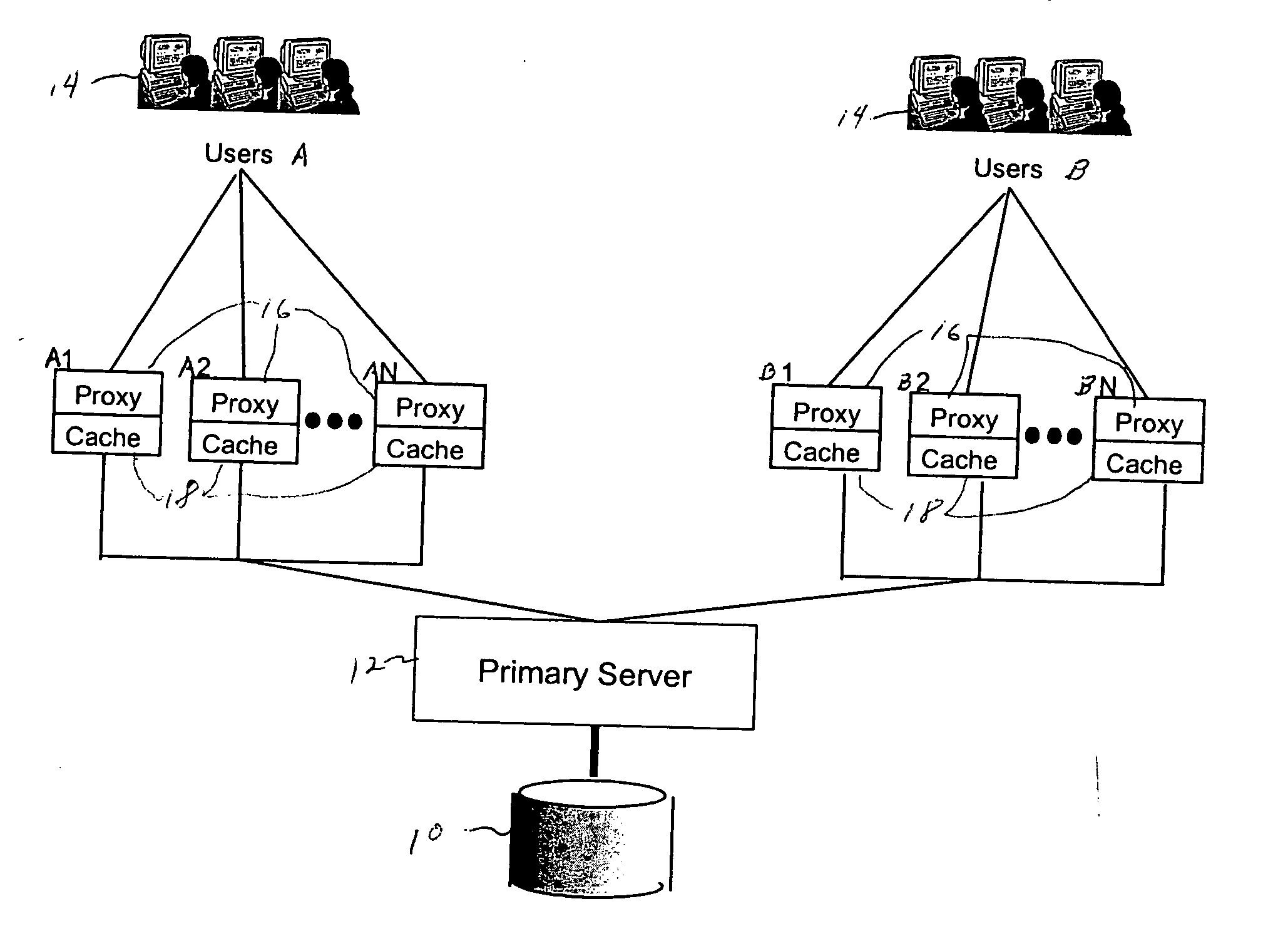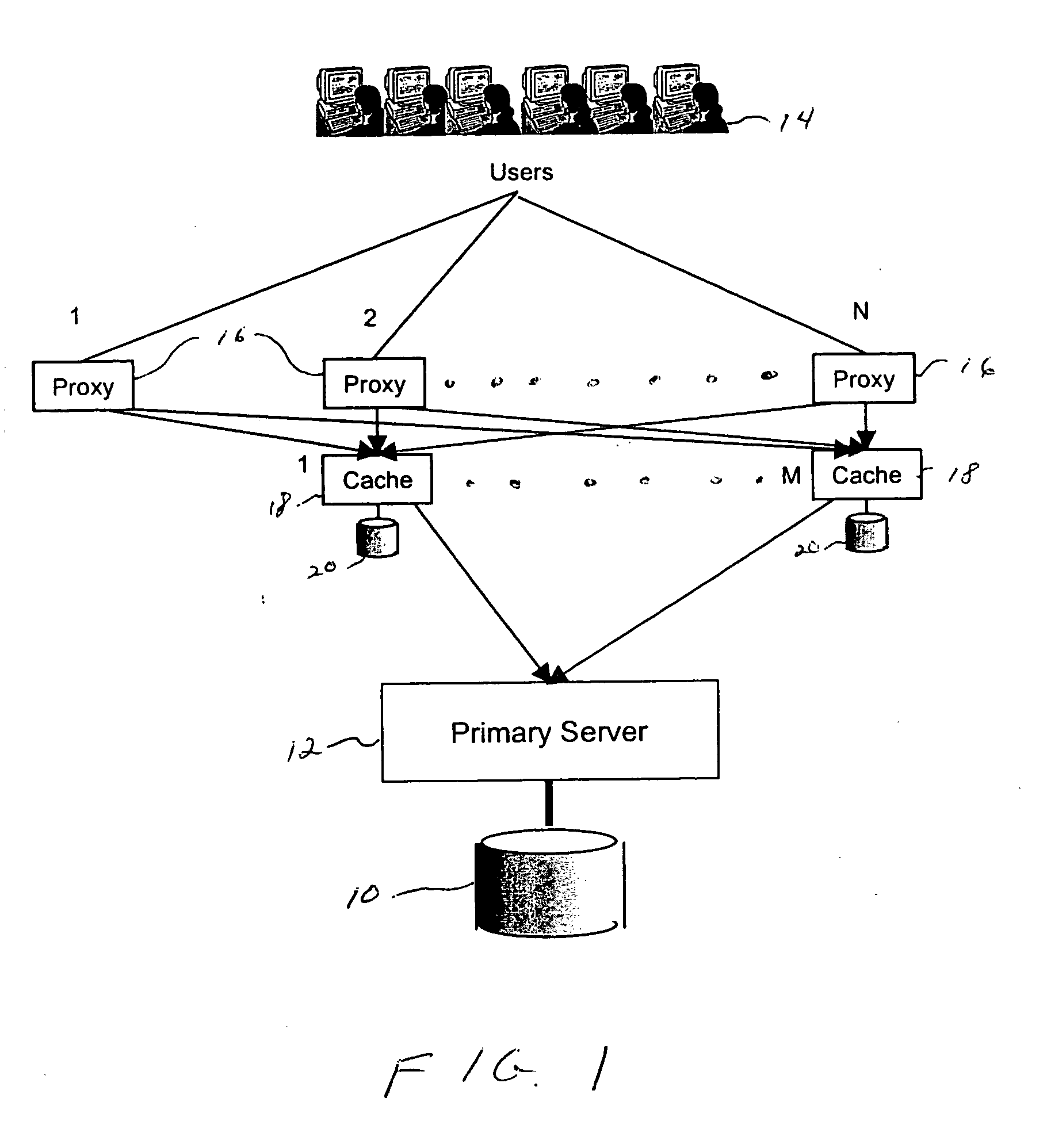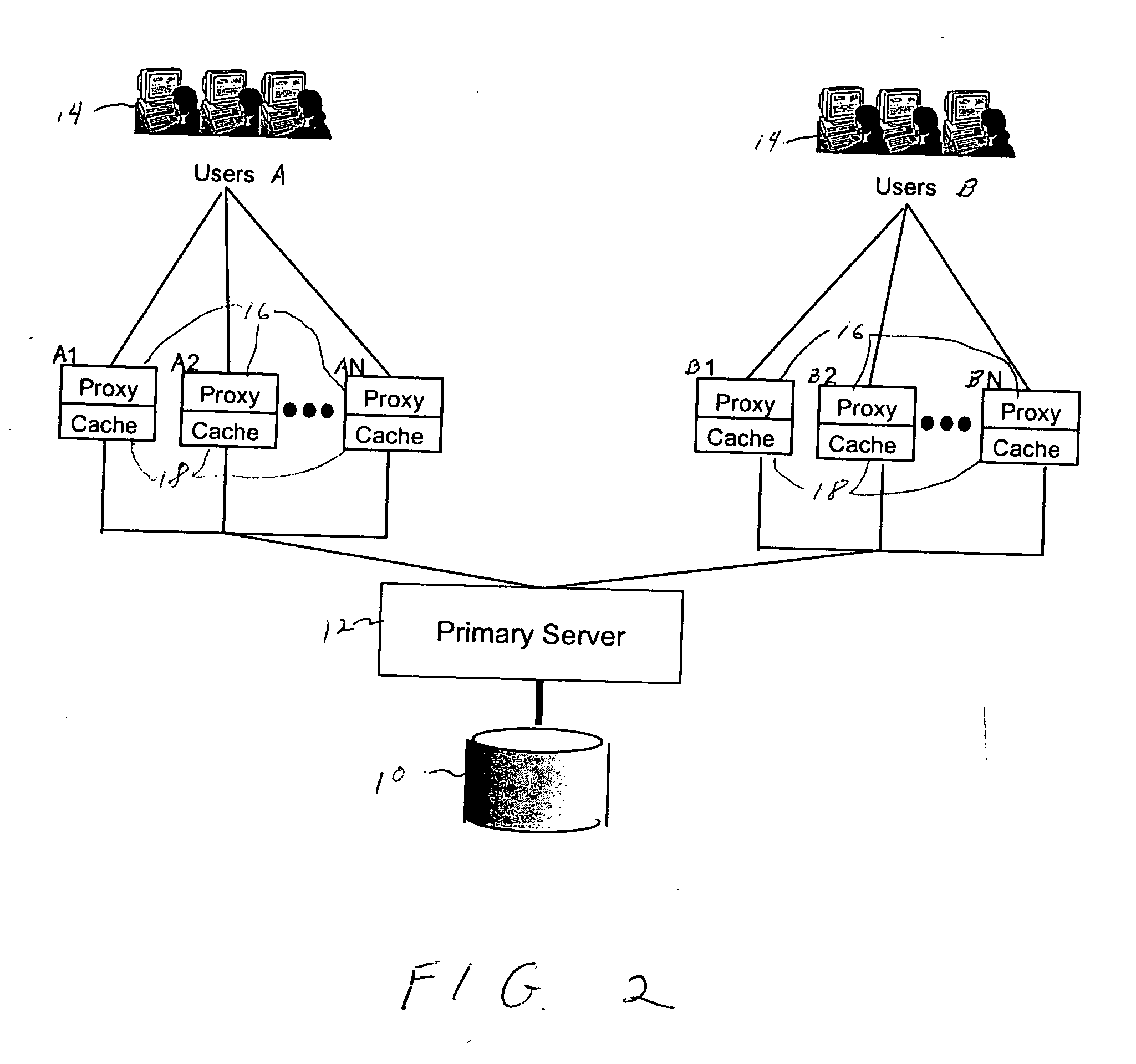Proxy and cache architecture for document storage
a document storage and proxy technology, applied in the direction of instruments, computing, electric digital data processing, etc., can solve the problems of increasing the cost of both upstream retrieval and discovery overhead, the inability to provide a large storage system, and the inability to quickly access documents
- Summary
- Abstract
- Description
- Claims
- Application Information
AI Technical Summary
Problems solved by technology
Method used
Image
Examples
first embodiment
[0031] Referring now to the drawings, wherein like numerals designate identical or corresponding parts throughout the several used, and more particularly to FIG. 1, wherein the overall arrangement of the present invention is shown as including a central storage unit 10. The storage unit 10 is connected to a primary server 12 which controls access to the storage unit. The storage unit has a very large capacity for a great many documents including those having a large size. In order to maintain the speed of the main storage unit, it is important that it not be accessed unnecessarily. Thus, if many users try to access the storage unit through the primary server 12, the speed of service will quickly drop.
[0032] Accordingly, the present invention utilizes an arrangement of proxies 16 and caches 18 to reduce the load on the primary server 12 and storage unit 10. Each of the users 14 is connected to the system through the Internet in a well-known manner. It would also be possible that some...
second embodiment
[0047] It is possible that in some situations, users will be distributed at a small number of the sites. If the proxies and caches are distributed among these sites there will be a lot of traffic between sites as proxies at one site access documents stored in caches at another site. This is an undesirable situation since the amount of message traffic becomes large. In order to avoid this situation, the invention has been developed as shown in FIG. 2.
[0048] In this system, the main storage unit and primary server are used in similar fashion. However, for the users at location A, a full set of proxies and caches are provided so that all of the documents will be stored in the caches located at site A. Likewise, for the group of users at site B, a full set of caches having all of the documents, are provided at that site as well. Using this arrangement, no message traffic needs to be instituted between the sites A and B. This type of arrangement will double the amount of access to the ma...
PUM
 Login to View More
Login to View More Abstract
Description
Claims
Application Information
 Login to View More
Login to View More - R&D
- Intellectual Property
- Life Sciences
- Materials
- Tech Scout
- Unparalleled Data Quality
- Higher Quality Content
- 60% Fewer Hallucinations
Browse by: Latest US Patents, China's latest patents, Technical Efficacy Thesaurus, Application Domain, Technology Topic, Popular Technical Reports.
© 2025 PatSnap. All rights reserved.Legal|Privacy policy|Modern Slavery Act Transparency Statement|Sitemap|About US| Contact US: help@patsnap.com



